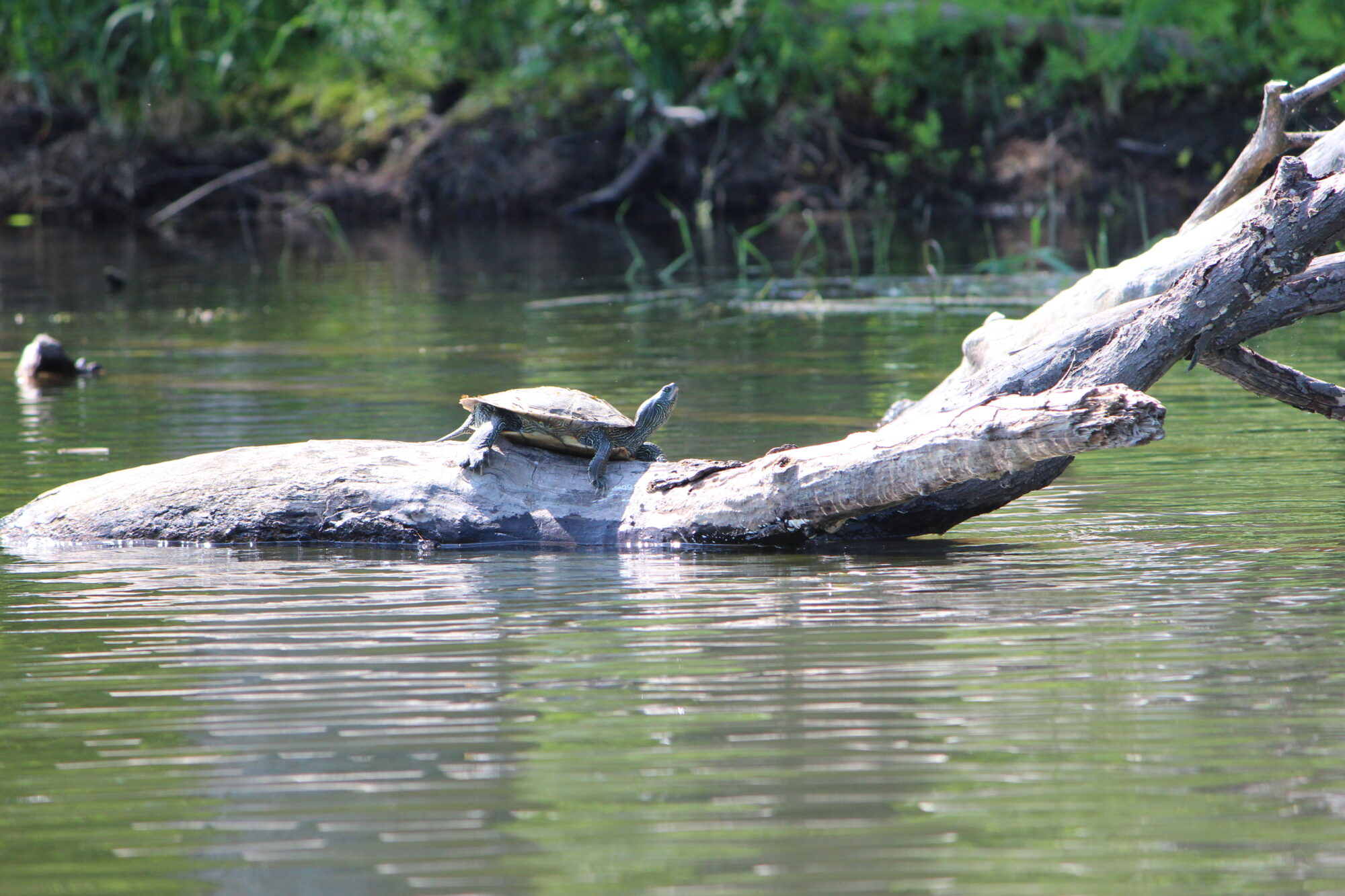Q: How do turtles survive under the ice?
A: During the warm summer months, it’s not uncommon to see turtles sunning on rocks or swimming through lakes and ponds, just like people. In the winter, however, turtles seek the relative warmth of lakes and ponds, where water temperatures hover around 39 degrees Fahrenheit. But as animals with lungs, who rely on oxygen just like people, how do turtles survive many months under the ice?

Even at peak oxygen levels, water has a lower concentration of oxygen than air, making lungs more of a hindrance than a help to turtles. Instead, turtles rely on an adaptation that allows them to “breathe” through the skin of their legs, the lining of their mouth, and the cloaca, or rear end. This adaptation isn’t foolproof, however; dissolved oxygen in the lake becomes depleted over the course of the winter, and even turtle species who can tolerate low oxygen conditions may seek out springs or other features that increase local oxygen levels.
Two species relatively common throughout the Lake Champlain Basin have evolved to partially bypass the need for oxygen throughout the winter. Painted and snapping turtles can activate anaerobic respiration, which allows them to remain somewhat metabolically active even under deoxygenated conditions. This adaptation is not without its consequences, however.
Let’s use the human body as an example: people experience anaerobic respiration during bursts of high-intensity physical activity, like sprinting. This kind of respiration allows glucose (a sugar compound) to break down without oxygen. The ensuing buildup of lactic acid in the body’s muscle tissues usually leads to stiffness and soreness for a few days, in addition to the burning sensation in the moment.
Over the course of many months without significant oxygen, turtles’ bodies build up acid and other byproducts of anaerobic respiration. Painted turtles have a built-in solution for this: they can free calcium carbonate stored in their shells, which neutralizes acids as they build up in the blood and muscle tissues. Not all turtles have this ability, likely owing to variations in shell composition.
When spring finally arrives, turtles jump at the chance to bask in the sunlight—just like people! For turtles, the sun rays do more than boost the spirits: their metabolic rate increases and they process any residual acid byproducts that built up over the course of the winter.
Sources: Lake Champlain Committee, Carleton.edu